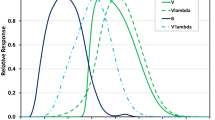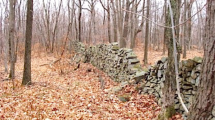Abstract
A new method is developed for solving the shortwave and longwave net radiative balance of a three-dimensional urban structure, represented by parallelepiped blocks uniformly distributed in each direction. The method is based on a novel approach to determine the shape factors among surfaces, which are estimated by Monte Carlo techniques due to the complex geometry associated with the three-dimensional urban structure. Then, a set of linear equations is solved to quantify the radiative balance, in order to obtain their exact solution, considering all the inter-reflections among surfaces. The comparison between the new and the ray-tracing tracking methods resulted in a Pearson correlation coefficient of 0.996. However, by integrating the linear equations’ exact solution with Monte Carlo techniques, the new method reduces by a factor of 36 the central processing unit (CPU) time used to perform the calculations of the ray-tracing tracking method. The use of the model for a sensitivity study allows us to verify the effective absorptance and emittance increases with the canyon aspect ratio of the urban layout. An urban structure formed by square cross-sectional blocks absorbs more solar radiation than an urban structure formed by rectangular cross-sectional blocks. The approximation of a specific geometry for an equivalent bi-dimensional infinite street can be applied for rectangular cross-sectional blocks, where the width is 11 times or more greater than the depth dimension.
Similar content being viewed by others
Abbreviations
- a, b, c, d :
-
wall building surfaces
- f :
-
fraction of rays which intersect the surface
- h :
-
altitude above sea (km)
- l :
-
proportion between block width and depth
- m :
-
total number of surfaces
- n :
-
number of neighbour urban units
- n it :
-
number of iterations
- n sb :
-
number of sub-surfaces
- k :
-
number of subdivisions of a vertical surface
- r :
-
number of grid nodes
- r se :
-
sun–earth distance factor
- z :
-
zenith angle (rad)
- A :
-
surface area (m2)
- A, A 1, A 2 :
-
absorptivity matrices
- B :
-
total outgoing radiative flux density (W m−2)
- B :
-
total outgoing radiative flux density vector (W m−2)
- D :
-
horizontal sky diffuse radiation flux density (W m−2)
- E, E 1 :
-
emissivity matrices
- F :
-
shape factor between surfaces
- F :
-
shape factor matrix
- G :
-
global radiation flux density (W m−2)
- H :
-
building block height (m)
- I :
-
identity matrix
- J day :
-
Julian day
- I 0 :
-
solar constant (W m−2)
- K :
-
direct surface irradiation flux density (W m−2)
- K ⊥ :
-
normal direct radiation flux density (W m−2)
- L ↓ :
-
sky downward longwave radiative flux density (W m−2)
- L :
-
building block width (m)
- M :
-
air mass (kg)
- W :
-
space between blocks (m)
- T :
-
absolute temperature (K)
- T L :
-
Linke turbidity factor
- α:
-
absorptance
- \(\mathbf{ \alpha}\) :
-
absorptivity vector
- δ:
-
layout azimuth (deg)
- ɛ:
-
emittance
- \(\mathbf{\varepsilon} \) :
-
emissivity vector
- \(\mathbf{\kappa} \) :
-
Ψ weighting area vector
- ρ:
-
Pearson correlation coefficient
- σ:
-
Stephan–Boltzman constant (W m−2K−4)
- \(\mathbf{\omega} \) :
-
\(\Omega \) normalized vector
- Φ:
-
surface net radiative flux density (W m−2)
- \(\mathbf{\Phi} \) :
-
net radiative flux vector (W m−2)
- Γ:
-
transformation matrix
- Λ:
-
total incoming radiative flux density (W m−2)
- \({\bf \Omega}_{\rm L}\) :
-
black surface emitted radiation vector (W m−2)
- \({\bf \Omega}_{\rm S}\) :
-
shortwave irradiation vector (W m−2)
- Ψ:
-
urban matrix
- Subscripts:
-
- i, j :
-
general surfaces indexes
- g:
-
ground surface
- rf:
-
roof surface
- sf:
-
generic surface
- ub:
-
urban block
- w:
-
wall surface
- wg:
-
walls and ground surfaces
- x, y :
-
x- and y-axis
- S:
-
shortwave
- L:
-
longwave
References
Aida M (1982) Urban Albedo as a function of the urban structure—a model experiment. Boundary-Layer Meteorol 23:405–413
Arnfield AJ (1982) An approach to the estimation of the surface radiative properties and radiation budgets of cities. Phys Geog 3:97–122
Arnfield AJ (1988) Validation of an estimation model for urban surface Albedo. Phys Geog 9:361–372
Arnfield AJ (2003) Two decades of urban climate research: a review of turbulence, exchanges of energy and water, and the urban heat island. J Climat 23:1–26
Athienitis AK Santamouris M (2002) Thermal analysis and design of passive solar buildings. James & James, London, 288 pp.
Bourges B (1992) Climate data handbook for Europe. Kluwer Academic Publishers, London, 112 pp.
Chimklai P, Hagishima A, Tanimoto J (2004) A computer system to support albedo calculation in urban areas. Building Environ. 39:1213–1221
Harman IN, Best M, Belcher S (2004) Radiative exchange in an urban street canyon. Boundary-Layer Meteorol 110:301–316
Johnson GT, Watson ID (1984) The determination of view-factors in urban canyons. J Climate Appl Meteorol 23:329–335
Kanda M, Kawai T, Nakagawa K (2005) A simple theoretical radiation scheme for regular building arrays. Boundary-Layer Meteorol 114:71–90
Kasten F (1980) A simple parameterization of two pyrheliometric formulae for determining the Linke turbidity factor. Meteorol Res. 33:124–127
Kawai T, Kanda M (2003) Three dimensional radiation model for urban canopy. J Hydrol Eng 47:55–60 (in Japanese)
Kobayashi T, Takamura T (1994) Upward longwave radiation from a non-black urban canopy. Boundary-Layer Meteorol 69:201–213
Kondo A, Ueno M, Kaga A, Yamagushi K (2001) The influence of urban canopy configuration on urban Albedo. Boundary-Layer Meteorol 100:225–242
Kusaka H, Kondo H, Kiregawa Y, Kimura F (2001) A simple single-layer canopy model for atmospheric models:comparison with multi-layer and slab models. Boundary-Layer Meteorol 101:329–358
Linke F (1922) Transmissions-Koeffizient und Trübungsfaktor. Beitr Phys fr Atmos 10:91–103
Martilli A, Clappier A, Rotach MW (2002) An urban surface exchange parameterization for mesoscale models. Boundary-Layer Meteorol 104:261–304
Masson V (2000) A physically-based scheme for the urban energy budget in atmospheric models. Boundary-Layer Meteorol 94:357–397
Mills GM (1993) Simulation of the energy budget of an urban canyon—I. Model structure and sensivity Test. Atmos Environ 27B:157–170
Nunez M, Oke T (1977) The energy balance of an urban canyon. J Appl Meteorol 16:11–19
Pawlak W, Fortuniak K (2002) Estimation of the effective Albedo of the urban canyon – comparison of two algorithms. Proceedings of the international conference man and climate in the 20th Century. Wroclaw, Poland
Pawlak W, Fortuniak K (2003) Application of physical model to study effective Albedo of the urban canyon. Proceedings of the fifth international conference on urban climate. Lodz, Poland
Perrin de Brichambaut C, Vauge C (1982) Le gisement solaire: Evaluation de la ressource énergétique. Technique et documentation, Lavoisier, Paris
Sakakibara Y (1996) A Numerical study of the effect of urban geometry upon the surface energy budget. Atmos Environ 30:487–496
Santamouris M (2001) Energy and climate in the urban built environment. James & James, London, 402 pp.
Sparrow EM, Cess RD (1978) Radiation heat transfer. Hemisphere Publishing Corporation, Washington, DC, 306 pp.
Steyns DG, Lyons TJ (1985) Comment on the determination of view-factors in urban canyons. J Climate Appl Meteorol 24:383–385
Swaid H (1993) The role of radiative-convective interaction in creating the microclimate of urban street canyons. Boundary-Layer Meteorol 64:231–259
Verseghy DL, Munro DS (1989a) Sensitivity studies on the calculation of the radiation balance of urban surfaces: I Shortwave radiation. Boundary-Layer Meteorol 46:309–331
Verseghy DL, Munro DS (1989b) Sensitivity studies on the calculation of the radiation balance of urban surfaces: II Longwave radiation. Boundary-Layer Meteorol 48:1–18
Yoshida A, Tominaga K, Watani S (1990–91) Field measurements on energy balance of an urban canyon in the summer season. Energ. Buildings 15–16:417–423
Author information
Authors and Affiliations
Corresponding author
Rights and permissions
About this article
Cite this article
Panão, M.J.N.O., Gonçalves, H.J.P. & Ferrão, P.M.C. A Matrix Approach Coupled with Monte Carlo Techniques for Solving the Net Radiative Balance of the Urban Block. Boundary-Layer Meteorol 122, 217–241 (2007). https://doi.org/10.1007/s10546-006-9088-y
Received:
Accepted:
Published:
Issue Date:
DOI: https://doi.org/10.1007/s10546-006-9088-y




